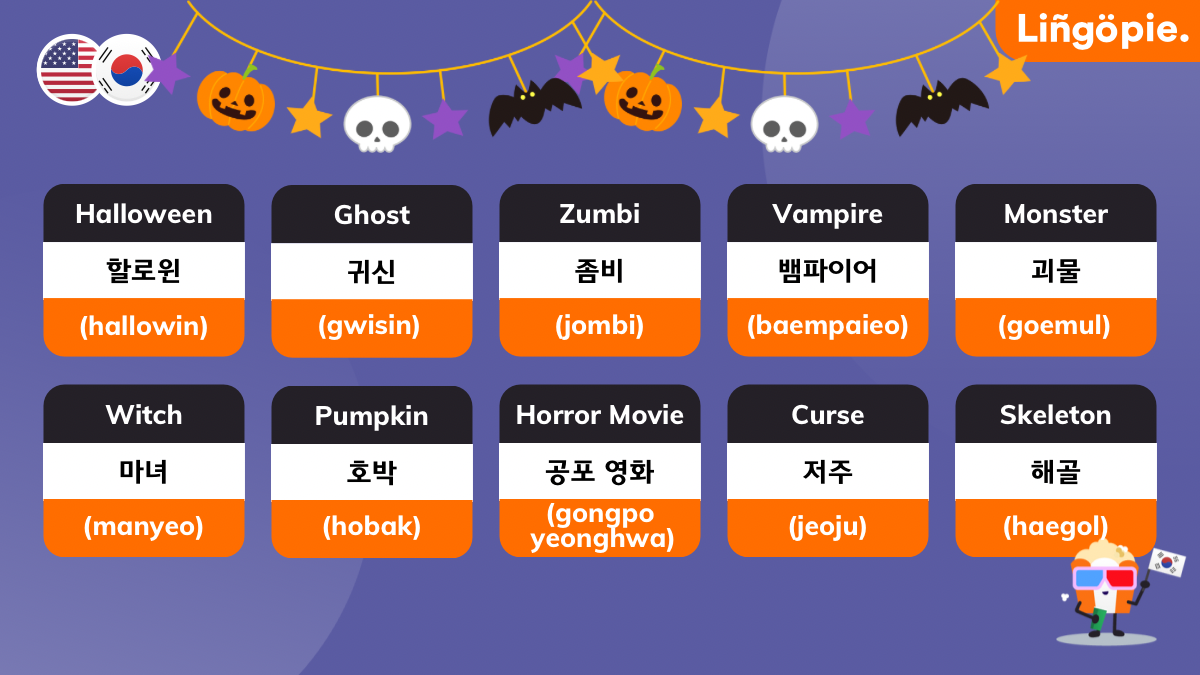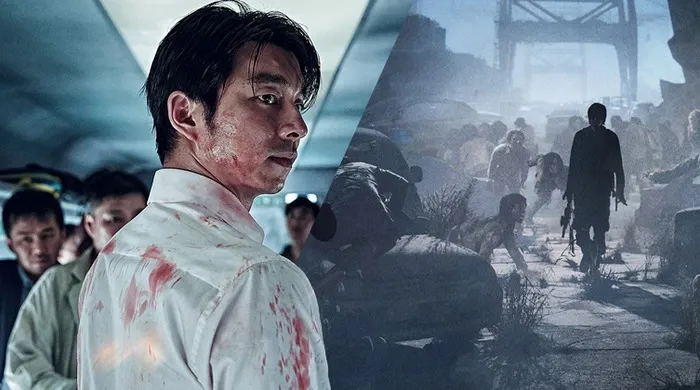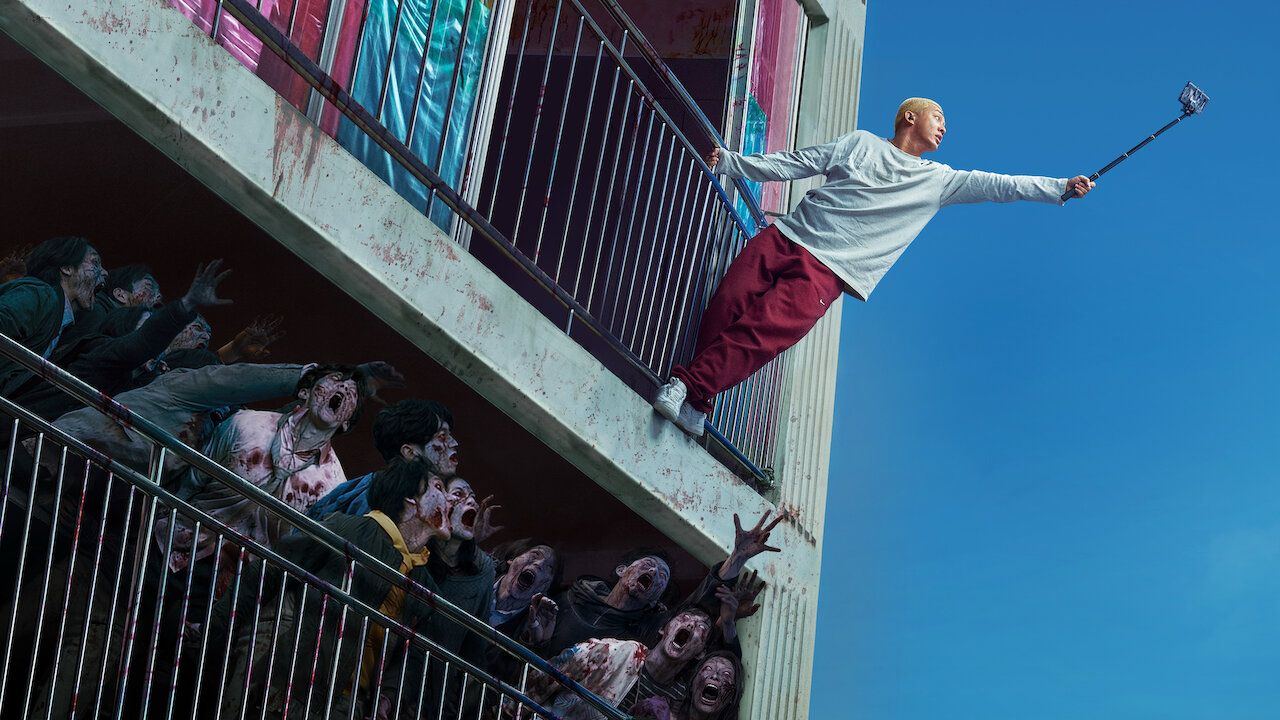Spooky season is here, and if you’re anything like me, you’re looking for the perfect lineup of horror movies to binge. Living in South Korea has given me access to some of the best (and creepiest) horror content out there, and trust me...Korean horror hits different!
And here’s the best part: you can use these movies to actually learn Korean. I’ve been using Lingopie while watching some of these gems, and it’s been a game-changer. You get immersive, real-life language without boring textbooks. Lingopie’s interactive subtitles let you tap words, hear native pronunciation, and save new phrases right as you watch.
- 50+ Jokes in Korean And What They Mean [Guide]
- K-pop Demon Hunters: Traditional Korean Easter Eggs You Probably Missed
- 11+ Best Shows On Netflix To Learn Korean [2025]

Korean Words For Halloween
Before you dive into these terrifying Korean films, it might be fun to know some Halloween-related Korean vocabulary. While Halloween (할로윈 - Hallowing) isn't traditionally celebrated in Korea, the holiday has gained popularity in recent years, especially among younger generations in Seoul's nightlife districts.
Here are some essential Korean words to enhance your K-horror movie night:
- 귀신 (gwishin) - Ghost or spirit. This is the most common word you'll hear in Korean horror films, referring to vengeful spirits that often drive the plot.
- 좀비 (jombi) - Zombie. A direct transliteration, perfect for films like Train to Busan.
- 무서운 (museoun) - Scary or frightening. Use this to describe how terrifying these movies are!
- 공포 영화 (gongpo yeonghwa) - Horror movie. Literally "fear film."
- 악마 (akma) - Devil or demon, often appearing in possession-themed horror.
- 저주 (jeoju) - Curse. A recurring theme in Korean horror cinema.
- 으스스한 (euseuseuhan) - Creepy or eerie. Captures that unsettling atmosphere Korean horror does so well.
- 피 (pi) - Blood. Short, simple, and effective.
- 비명 (bimyeong) - Scream. You'll be doing plenty of this.
- 호박 (hobak) - Pumpkin. While carved pumpkins aren't traditional in Korea, they're becoming more common during Halloween celebrations.
- 사탕 (satang) - Candy
- 마녀 (manyeo) - Witch
- 뱀파이어 (baempaieо) - Vampire
- 해골 (haegol) - Skeleton
- 가면 (gamyeon) - Mask
- 묘지 (myoji) - Cemetery
With these phrases, you’ll be able to survive any haunted house and sound like a Halloween pro! Practice them while watching your favorite scary movies, and let Lingopie’s flashcards and dual subtitles help you cement them in your memory

Korean Horror Films To Learn Korean
1. Train to Busan (2016)

Train to Busan isn’t just a zombie movie, it’s the zombie movie. The whole thing plays out on a speeding train, which means the action never slows down. You get non-stop chaos, heartbreaking character moments, and some of the best suspense sequences in modern horror. It’s the kind of film that leaves you exhausted but in the best way possible.
For Korean learners, this movie is definitely a must-watch. The dialogue is simple and direct because everyone is in survival mode. You’ll catch parents talking to kids, strangers arguing, and groups working together under pressure. It’s clear, emotional, and easy to follow, which makes it perfect practice material.
2. Alive (2020)

Alive takes the apocalypse and shrinks it down to one gamer stuck in his apartment with nothing but Wi-Fi and ramen. It’s claustrophobic, funny, and stressful all at once. Instead of focusing on the world collapsing, it zooms in on how it feels to be truly alone while everything outside falls apart.
Language-wise, this one feels super current. The main character speaks like any young person would—casual, slangy, and often a little dramatic. If you want to pick up modern expressions and phrases people actually use every day, this movie is an easy win.
3. The Call (2020)

The Call starts with one phone ringing and ends with a nightmare you won’t forget. Two women connect across time, and their choices start twisting fate in terrifying ways. It’s sharp, unpredictable, and packed with mind-bending tension that keeps you glued until the very end.
This is great for learners because the film shifts between normal conversation and high-stakes, emotional exchanges. You’ll hear casual chat, intense arguments, and dramatic lines that stretch your listening skills. It’s the perfect mix of everyday language and heavy drama.
4. Unlocked (2023)

Unlocked taps into every millennial and Gen Z nightmare: your phone gets hacked and your life falls apart. It’s slick, modern, and terrifying because it feels so real. The paranoia builds with every scene, and by the end you’ll want to double-check all your passwords.
This film is great for learning because it’s packed with tech vocabulary and digital-life slang. You’ll hear everyday conversations, work talk, and online terms, so it’s a great way to practice language you’d actually use in today’s world.
5. Gonjiam: Haunted Asylum (2018)

Gonjiam is found-footage horror at its creepiest. A group of YouTubers explores an abandoned asylum for views, and of course, everything goes horribly wrong. It’s unsettling, atmospheric, and one of the best modern haunted-house movies.
The dialogue is casual and laid-back since the characters are friends filming content. That makes it a great resource for hearing natural, conversational Korean without too much formality.
6. A Tale of Two Sisters (2003): Supernatural Elements

A Tale of Two Sisters is psychological horror done right. It mixes family drama with eerie supernatural events, and the atmosphere keeps you unsettled until the haunting payoff. It’s creepy, emotional, and a classic for a reason.
For learners, the language shifts between formal family interactions and raw emotional dialogue. It’s perfect if you want to hear the difference between polite speech and more personal, emotional tones.
7. Seoul Station (2016)

Seoul Station is the animated prequel to Train to Busan, showing how the zombie outbreak first took over the city. It blends chaos with sharp social commentary, especially on issues like homelessness and inequality. It’s intense, smart, and a must-see if you loved Train to Busan.
Since it’s animated, the speech is often clearer and easier to catch. At the same time, it still uses natural, everyday dialogue, making it a good mix of accessibility and realism for learners.
8. Thirst (2009)

Thirst isn’t your typical vampire movie. It follows a Catholic priest who accidentally becomes a vampire, and it dives into questions of morality, desire, and identity. It’s stylish, dark, and surprisingly thought-provoking.
This one leans into more poetic and dramatic language, so it’s a bit tougher than others on the list. But if you’re looking to push yourself, it’s a great way to hear advanced Korean used in emotional and philosophical contexts.
9. Death Bell (2008)

Death Bell is like Saw meets high school exams. Students are trapped in their school, forced to solve deadly puzzles while a killer watches. It’s brutal, tense, and a fun twist on the slasher formula.
The dialogue is full of high school lingo and casual youth speech. That makes it especially helpful if you want to learn how younger Koreans talk in a school setting.
10. The Mimic (2017)

The Mimic takes inspiration from a Korean urban legend about the Jangsan Tiger, a creature that lures people with a human-like voice. The movie follows a family pulled into its eerie world, and the slow-burn scares make it deeply unsettling.
It’s great for learners because it blends natural, everyday conversations with eerie supernatural dialogue. You’ll also get a taste of folklore-inspired vocabulary that adds cultural depth.
11. Host (2020)

Host isn’t Korean, but it deserves a mention. It was filmed entirely during the pandemic and takes place on a cursed Zoom call. It’s short, sharp, and a perfect example of how horror is adapting to modern life.
If you throw on Korean subtitles, it doubles as language practice. You’ll get exposure to descriptive words and conversational patterns while watching a fresh, modern horror concept.
12. Cinderella (2006)

Cinderella puts a dark twist on beauty and vanity, following a mysterious girl whose secrets unravel in terrifying ways. It’s eerie, slow-burning, and full of atmosphere, far removed from any fairy tale you know.
The dialogue here is poetic and descriptive, which makes it valuable for learning more expressive Korean. It’s also packed with emotional conversations that push beyond basic vocabulary.
Korean Horror Movie Directors and Their Signature Styles
Korean horror movie directors have significantly shaped the genre, each bringing their unique vision and style to the screen. Here are some of the most notable directors and their signature styles:
Park Chan-wook
Known for his visually stunning and atmospheric films, Park Chan-wook is a master of blending horror with psychological depth. His works often explore themes of trauma, desire, and the supernatural. Films like Thirst(2009), where a Catholic priest grapples with newfound vampiric urges, showcase his ability to intertwine horror with complex moral dilemmas.
Bong Joon-ho
A versatile director, Bong Joon-ho seamlessly balances horror and social commentary. His monster movie The Host (2006) is a prime example, critiquing government corruption and environmental negligence while delivering heart-pounding thrills. Bong’s ability to weave societal issues into his narratives sets him apart.
Kim Jee-woon
Known for his tense, atmospheric horror films, Kim Jee-woon excels in creating gripping narratives that explore trauma and grief. A Tale of Two Sisters (2003) is a testament to his skill, with its intricate plot and haunting visuals that delve deep into family dynamics and mental illness.
Na Hong-jin
A master of slow-burning horror, Na Hong-jin’s films are known for their atmospheric tension and complex storytelling. The Wailing (2016) is a standout, blending supernatural elements with a gripping mystery that keeps viewers on the edge of their seats.
Yeon Sang-ho
Balancing horror with elements of comedy, Yeon Sang-ho’s films often explore themes of class and societal issues. Train to Busan (2016) is a perfect example, combining high-speed zombie action with emotional depth and social commentary.
These directors have made significant contributions to Korean horror, pushing the boundaries of the genre and exploring new themes and ideas.
Where to Watch Korean Horror Movies in South Korea
If you’re in South Korea and looking to watch Korean horror movies, there are several options available. Here are a few:
- CGV Cinemas: As one of the largest cinema chains in South Korea, CGV often screens the latest Korean horror movies. Check their website for showtimes and locations to catch the newest releases.
- Lotte Cinema: Another popular cinema chain, Lotte Cinema, frequently features Korean horror films. Their website provides showtimes and locations, making it easy to find a screening near you.
- Korean Film Archive: For those interested in classic Korean horror movies, the Korean Film Archive is a treasure trove. They often screen rare and hard-to-find films, and the best part? Admission is free.
- Streaming Services: Many Korean horror movies are available to stream on platforms like Netflix, Amazon Prime Video, and KBS World TV. These services offer a wide selection of films with subtitles, making it convenient to watch from the comfort of your home.
Whether you prefer the big screen experience or the convenience of streaming, South Korea offers plenty of options to enjoy the best of Korean horror cinema.
Influence of Korean Horror on Global Cinema
Korean horror movies have left an indelible mark on global cinema, inspiring filmmakers and spawning numerous adaptations. Here are some ways Korean horror has influenced the world:
Remakes and Adaptations: Many Korean horror films have been remade or adapted into English-language films. For instance, the American film The Ring (2002) was influenced by the Korean horror film Ringu, showcasing the cross-cultural impact of these chilling tales.
Influence on Western Horror Films: Korean horror has inspired Western horror films, with directors like Jordan Peele and Ari Aster drawing from its unique blend of psychological depth and supernatural elements. Films like The Babadook(2014) and Get Out (2017) reflect this influence, incorporating similar themes and narrative techniques.
Inspiration for New Filmmakers: Korean horror films have inspired a new generation of filmmakers. Directors like Jordan Peele have cited Korean horror as an influence, using its techniques to craft their own unique horror narratives.
Global Recognition: Korean horror films have gained global recognition, with movies like Train to Busan (2016) and The Wailing (2016) receiving critical acclaim and commercial success. These films have introduced international audiences to the unique storytelling and thematic depth of Korean horror.
Cultural Exchange: Korean horror films have facilitated cultural exchange, allowing audiences worldwide to explore Korean culture and societal issues. Films like The Host (2006) and Thirst (2009) delve into themes of Korean identity and cultural beliefs, fostering a deeper understanding and appreciation of Korean cinema.
These examples demonstrate the significant influence of Korean horror on global cinema, inspiring new films and filmmakers and facilitating cultural exchange between Korea and other countries.
FAQs about Korean Horror Movies
Where can I stream Korean horror movies?
You can watch them on platforms like Netflix, Amazon Prime, and Lingopie, which offers Korean films with interactive subtitles to help you learn as you watch.
What is the scariest Korean horror movie?
A Tale of Two Sisters is often hailed as the most terrifying Korean horror film due to its psychological depth and haunting visuals. The film features Im Soo-jung and Yum Jung-ah in significant roles, contributing to its critical acclaim and impact on the South Korean horror genre. It was the highest-grossing Korean horror film and the first to be screened in American theaters.
Why are Korean horror movies so popular?
Korean horror blends emotional storytelling with top-tier suspense, addressing personal and societal fears in ways that resonate globally.
Can I improve my Korean by watching horror films?
Absolutely! Watching with Lingopie lets you pause, translate, and save new words, making it easy to pick up practical vocabulary while enjoying the movies.
Which Korean horror movie is best for beginners learning Korean?
Train to Busan is great for beginners—its dialogue is clear, and the fast-paced action will keep you hooked. Use Lingopie to follow along with subtitles and boost your skills.
What are some essential Korean words and phrases to know when watching K-horror?
Key terms include 귀신 (gwishin) for ghost, 원귀 (wongwi) for vengeful ghost, and 저주 (jeoju) for curse. You'll often hear "살려줘!" (sallyeojwo!) meaning "Save me!" and see 굿 (gut), shamanic rituals to appease spirits. Understanding 한 (han), that deep sorrow and resentment, is central to why K-horror ghosts are so emotionally driven.
Get Scared and Get Fluent This Halloween Season
This Halloween season, why not turn your love for Korean horror into an opportunity to learn the language? Lingopie offers a unique way to immerse yourself in Korean through actual horror content, allowing you to pick up vocabulary, phrases, and cultural context while enjoying spine-tingling stories.
Instead of passively watching with subtitles, Lingopie’s interactive platform lets you click on words and phrases in real-time to see translations and explanations. You'll naturally absorb terms like gwishin (ghost) and jeoju (curse) while experiencing the atmospheric dread that makes K-horror so captivating.
So grab your popcorn, dim the lights, and let Korean horror be your teacher this Halloween. Your nightmares might be in Korean, but at least you'll understand them. 해피 할로윈 aka Happy Halloween! 🎃👻








![How To Speak Korean: Classes, Apps, And Immersion Tips [2025]](/blog/content/images/size/w300/2025/10/how-to-speak-korean-2.jpg)
![Korean Aegyo: Korean Words And Gestures To Look And Sound Cute [2025]](/blog/content/images/size/w300/2025/10/Korean-agyeo.png)